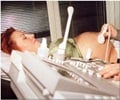Studies show that cryo babies are heavier and larger than babies from fresh embryo transfers.

"Frozen embryo transfer did not seem to adversely affect neonatal outcome," says Dr. Sylvie Epelboin, from Bichat-Claude Bernard Hospital, Paris. "We are not sure why the cryo babies are heavier and larger, but we think it may have something to do with the hormonal hyperstimulation during the fresh cycles."
The researchers found no significant difference between the two cohorts in terms of preterm birth rate and mode of delivery. However, the boys to girls ratio was 1.05 times higher in the cryo group as was the IVF/ICSI ratio (84% compared to 65%). The ratio of women who had given birth once to multiparous women was 1.6 times higher in the fresh cohort. The group analysed 16,002 singletons, 2,140 of these children were in the cryo group and 13,682 were from fresh embryo transfers.
In a second study from Denmark Dr. Anja Pinborg and her group from the Rigshospital at Copenhagen University compared intrauterine parameters of 910 singletons born after frozen embryo transfer (FET) with 9,603 babies from fresh embryo transfer and 4,656 naturally conceived (NC) children. The rate of large-for-gestational age (LGA) babies was significantly different between the three groups with 16.9% for FET, 10.3% for fresh transfer and 11.4% for NC babies. The same applied to the rate of babies with birth weight of 4,500g or more (5.6%, 2.8% and 3.4% respectively). "Cryopreservation of embryos can result in 'Large Offspring Syndrome', which may be explained by epigenetic changes in the very early embryonic stages caused by freezing and thawing procedures," says Dr. Pinborg. "Future studies must look into the precise epigenetic changes causing LGA offspring in humans. In animal studies, there is evidence that abnormal gene expression of certain developmentally important genes may be responsible for the observed large offspring syndrome."
The risk for a baby to be too heavy for the gestational age at birth is increased 1.6 fold compared to children from fresh embryo transfer and 1.5 fold compared to naturally conceived children. The group found a similar significant pattern for small-for-gestational age (SGA) children. Only 9.2% of FET singletons were SGA compared to 14.8% in fresh IVF and ICSI and 11.3% in NC children.
"We think that because in FET cycles hormone supplementation mimics the natural cycle, compared to the superphysiologically high hormonal stimulation of women in fresh cycles, this 'similar-to-natural-cycle concept' may influence endometrial receptivity, early implantation and placental development in a positive way, leading to higher foetal growth and higher mean weight," Dr. Pinborg will say.
Advertisement
Babies with a high birth weight may face an increased rate of delivery by Caesarean section and obstetric intervention causing complications for both mother and baby.
Advertisement
Source-Eurekalert








